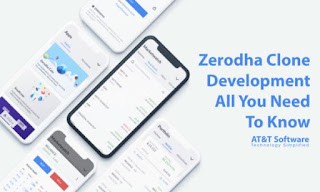5 Steps of Web Design and Development
Website development is developing a website focusing on aesthetic elements such as the layout of the site, its user interface, and other elements of visual design. The primary purpose of web designing is to create an attractive website that is also simple to navigate. If you are looking for the best website design and development services, you should consider AT&T Software for your website design and development projects.
Why Web Design Matters?
A clear and well-structured site not only boosts traffic but also aids visitors to comprehend the company product, service, or product by using text, images, and, sometimes, animations. In the end, an improved user experience can help businesses to connect with larger audiences.
5 Steps of Web Design and Development
There are a lot of different factors to be considered when designing the look and feel of a website. To ensure that you don't get overwhelmed by, the process of developing a web design can be broken down into seven stages:
- Information Gathering
- Planning
- Design
- Development
- Testing
1 - Information Gathering
The first stage is to collect all the information needed, necessary for the project. As a design group, you must ask pertinent questions that will help you understand the requirements of your business. Take the time to analyse the client's requirements, determine the primary purpose of the website, and identify the site's primary goals. The most sought-after goals include information sharing and revenue-generating or both. Your team needs to contemplate how you can achieve your business goals by using an effective website.
2 - Planning and Strategy
Based on the data gathered in the initial phase, it's time to organize it and create a comprehensive web design. It is where the site map is created. The site map is the listing of all the website's main topics, including sub-topics, where applicable. This map will provide a clear understanding of what content will be posted on the site and help comprehend the navigation structure. Future customers will be the end-users of the site. Their journey needs to be as straightforward as it is. The key to a simple-to-use website is an excellent user interface.
3 - Graphical Design
As part of the designing process, it's essential to be careful and considerate when you use visual elements such as logos and colours to reinforce the branding identity of the site. In designing, the team typically creates at least one or two prototypes of the website. Prototypes are typically static images and will be the final design of the site. It is a good idea to design clickable prototypes that let the user experience the website before development.
4 - Development Process
At this stage, the design should be ready. However, it usually comes presented as static images. It is a bit more work to convert it into HTML/CSS and then include animations or JavaScript according to the style's degree of sophistication and complexity.
The homepage is first designed, and then there is a "shell" for the interior pages. The shell is used as a template for content pages of the site, since it houses the menu that is the site's primary feature. Once the shell is developed, the responsibility of the designers is to fill the internal pages with information.
In this phase, features like interactive contact forms and online shopping carts need to be put into place and functional.
5 - Testing
Once the content and visuals are set, The testing process can begin. Every page must be checked to ensure that all links and functions are working correctly, and the website is usually opening on different browsers. The word order of descriptions and titles can impact your website's performance on various search engines. In the future, if you have an increase in traffic to your website, it is possible to apply A/B testing methods to determine the best combination. AT&T Software offers top-notch best website design and development services to clients across the world suited to your business requirements.



Comments
Post a Comment